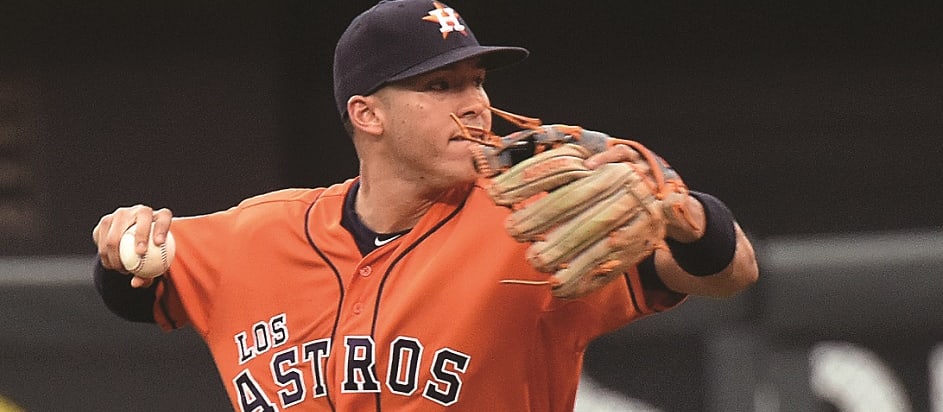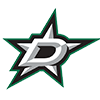In last week's MLB Barometer, I began the project of covering the players whose earned auction values diverged the most from their draft-day expectations, as established by their average draft position in NFBC contests. Last week's piece covered players from the first seven rounds; this week's entry into the two-part series will go over the rest of the draft, grouping several rounds together as we get deeper into things. There will be no fallers section for the players taken in the reserve rounds, as expectations for all those players are low to begin with and many of them get dumped very quickly, so it's not particularly useful to see which low-ranked players have been worse than the rest.
The early rounds were full of the season's biggest disappointments. That shouldn't come as a surprise, as the players selected the highest have the furthest to fall. For the top few rounds, it's very difficult for a player to actually finish higher than they were drafted, so merely staying within striking distance in the earned value rankings is commendable. It's much easier to lose your league in those rounds than win it, to put it in other terms.
This week's piece will feature some true league winners. First-round talents were apparently available as late as the 14th round, so if you wound up with several of the players among these lists of risers, you're likely in very good shape. On the other hand, you're certainly unhappy if you have many of the
In last week's MLB Barometer, I began the project of covering the players whose earned auction values diverged the most from their draft-day expectations, as established by their average draft position in NFBC contests. Last week's piece covered players from the first seven rounds; this week's entry into the two-part series will go over the rest of the draft, grouping several rounds together as we get deeper into things. There will be no fallers section for the players taken in the reserve rounds, as expectations for all those players are low to begin with and many of them get dumped very quickly, so it's not particularly useful to see which low-ranked players have been worse than the rest.
The early rounds were full of the season's biggest disappointments. That shouldn't come as a surprise, as the players selected the highest have the furthest to fall. For the top few rounds, it's very difficult for a player to actually finish higher than they were drafted, so merely staying within striking distance in the earned value rankings is commendable. It's much easier to lose your league in those rounds than win it, to put it in other terms.
This week's piece will feature some true league winners. First-round talents were apparently available as late as the 14th round, so if you wound up with several of the players among these lists of risers, you're likely in very good shape. On the other hand, you're certainly unhappy if you have many of the fallers listed below, but even if your 11th-round pick was so poor you had to cut him less than halfway into the season, it's unlikely that selection truly tanked your season.
Note that because this is the second article in a two-part series, the data was pulled at the same time as the data from last week's article for the sake of consistency. That will keep this as a true reflection of players' first-half value, and players' ranks won't have changed meaningfully in the last few days in most cases. The stats cited in this piece will be up to date through Saturday, however.
RISERS
Rounds 8-10
| Player | Position | Team | ADP | EAV Rank | Difference |
|---|---|---|---|---|---|
| Kevin Gausman | SP | SF | 136.0 | 16 | 120.0 |
| Marcus Semien | SS | TOR | 123.3 | 4 | 119.3 |
| Joey Gallo | OF | TEX | 148.0 | 31 | 117.0 |
| Carlos Correa | SS | HOU | 120.6 | 23 | 97.6 |
| Kris Bryant | 3B/OF | CHC | 125.3 | 54 | 71.3 |
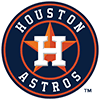 Carlos Correa, SS, Astros: Exactly how to value Correa heading into the season wasn't anything close to clear. His wRC+ over the previous four seasons tells the story quite well on its own: 152 in 2017, 101 in 2018, 143 in 2019 and 98 last season. It's tough to place too much faith in a player who hasn't been much more than an average hitter in two of the last three seasons, so it's no surprise he was the 14th player off the board at a very deep shortstop position. The lofty heights he reached in the past evidently haven't left him, however, as he's in the midst of one of his best seasons at the plate. His .288/.385/.510 slash line is good for a 149 wRC+, and he's already homered 16 times in 82 games, putting him well on his way towards smashing his career high of 24. Not only is he clearing the fence more than ever, he's also showing better plate discipline than ever, as both his 13.1 percent walk rate and 17.6 percent strikeout rate are personal bests. That suggests Correa's first half should be largely sustainable, especially given that he's reached these heights in the past, albeit not consistently.
Carlos Correa, SS, Astros: Exactly how to value Correa heading into the season wasn't anything close to clear. His wRC+ over the previous four seasons tells the story quite well on its own: 152 in 2017, 101 in 2018, 143 in 2019 and 98 last season. It's tough to place too much faith in a player who hasn't been much more than an average hitter in two of the last three seasons, so it's no surprise he was the 14th player off the board at a very deep shortstop position. The lofty heights he reached in the past evidently haven't left him, however, as he's in the midst of one of his best seasons at the plate. His .288/.385/.510 slash line is good for a 149 wRC+, and he's already homered 16 times in 82 games, putting him well on his way towards smashing his career high of 24. Not only is he clearing the fence more than ever, he's also showing better plate discipline than ever, as both his 13.1 percent walk rate and 17.6 percent strikeout rate are personal bests. That suggests Correa's first half should be largely sustainable, especially given that he's reached these heights in the past, albeit not consistently.
Rounds 11-13
| Player | Position | Team | ADP | EAV Rank | Difference |
|---|---|---|---|---|---|
| Shohei Ohtani | DH/SP | LAA | 179.0 | *** | *** |
| Chris Bassitt | SP | OAK | 193.0 | 60 | 133.0 |
| Trey Mancini | 1B/OF | BAL | 162.8 | 52 | 110.8 |
| Craig Kimbrel | RP | CHC | 183.4 | 95 | 88.4 |
| Ryan Mountcastle | 1B/OF | BAL | 154.2 | 69 | 85.2 |
Note: the earned auction value calculator doesn't seem to handle Ohtani's status as a two-way player properly, but there's no way he doesn't lead this group given his numbers.
Craig Kimbrel, RP, Cubs: Reliever sample sizes are always small. Perhaps that's the lesson we should take from Kimbrel's past several seasons. For the first nine years of Kimbrel's career, his dominance was unparalleled. No one else who through at least 500 innings over that stretch matched his 1.91 ERA or his 41.6 percent strikeout rate. He wasn't anything close to that over his first two seasons with the Cubs. His strikeout rate fell to 35.2 percent, his walk rate ballooned to 14.5 percent and his ERA shot all the way up to 6.00. While there's no defending his performance in those two campaigns, he threw just a combined 36 innings, so it's possible we collectively read far too much into what would normally just look like a small slump. His strikeout rate is back up at an incredible 46.2 percent (top among qualified relievers) while his walk rate is back under control at 8.5 percent. He won't maintain his pristine 0.57 ERA the rest of the way, but he really isn't far removed from his time as the league's best reliever, at least when measuring in terms of innings rather than years, so he has a good chance to finish the year as one of the game's top closers.
Rounds 14-18
| Player | Position | Team | ADP | EAV Rank | Difference |
|---|---|---|---|---|---|
| Jared Walsh | 1B/OF | LAA | 220.4 | 19 | 201.4 |
| Mitch Haniger | OF | SEA | 239.5 | 40 | 199.5 |
| Randal Grichuk | OF | TOR | 262.1 | 66 | 196.1 |
| Jesse Winker | OF | CIN | 207.4 | 12 | 195.4 |
| Mark Canha | OF | OAK | 258.5 | 68 | 190.5 |
 Jesse Winker, OF, Reds: I loved Winker over the winter and wound up with more shares of him than any other hitter, but even his biggest fans like me couldn't have anticipated him producing close to first-round value. The logic behind liking him so much (and the method which could work to find future Winkers) is that he'd shown both contact and power at times in the past, and if he could ever show both at the same time, he'd be a true star. I've been intrigued by Winker ever since he walked more than he struck out in 2018, and while he hasn't replicated that this year, his combination of a 10.1 percent walk rate and 16.9 percent strikeout rate is quite strong. Last year, his strikeout rate shot up to 25.1 percent, but he unlocked newfound power in the process, finishing with a .289 ISO, a number which came in just behind the likes of Nelson Cruz (.292). As with his contact, he hasn't quite duplicated that power, but his .242 is still a top-25 mark among qualified hitters and ties him with Bryce Harper. There are still flaws here, as Winker doesn't run and has a massive platoon split, posting a 52 wRC+ against lefties, but his breakout season is based on skills he'd already shown in the past, so there's reason to believe most of this should stick.
Jesse Winker, OF, Reds: I loved Winker over the winter and wound up with more shares of him than any other hitter, but even his biggest fans like me couldn't have anticipated him producing close to first-round value. The logic behind liking him so much (and the method which could work to find future Winkers) is that he'd shown both contact and power at times in the past, and if he could ever show both at the same time, he'd be a true star. I've been intrigued by Winker ever since he walked more than he struck out in 2018, and while he hasn't replicated that this year, his combination of a 10.1 percent walk rate and 16.9 percent strikeout rate is quite strong. Last year, his strikeout rate shot up to 25.1 percent, but he unlocked newfound power in the process, finishing with a .289 ISO, a number which came in just behind the likes of Nelson Cruz (.292). As with his contact, he hasn't quite duplicated that power, but his .242 is still a top-25 mark among qualified hitters and ties him with Bryce Harper. There are still flaws here, as Winker doesn't run and has a massive platoon split, posting a 52 wRC+ against lefties, but his breakout season is based on skills he'd already shown in the past, so there's reason to believe most of this should stick.
Rounds 19-23
| Player | Position | Team | ADP | EAV Rank | Difference |
|---|---|---|---|---|---|
| Yuli Gurriel | 1B | HOU | 315.4 | 34 | 281.4 |
| Bryan Reynolds | OF | PIT | 307.0 | 26 | 281.0 |
| Freddy Peralta | SP | MIL | 299.9 | 39 | 206.9 |
| Eduardo Escobar | 2B/3B | ARI | 290.7 | 44 | 246.7 |
| Justin Upton | OF | LAA | 343.1 | 108 | 235.1 |
 Bryan Reynolds, OF, Pirates: The fantasy community probably overreacted to Reynolds' poor 2020 season, though I have to count myself among that group, as I wasn't particularly excited about him either. He was a tough one to value, as he wasn't an elite prospect coming up through the minors, so it was tempting to look for reasons not to buy into his .314/.377/.503 line from his rookie campaign. His .189/.275/.357 line as a second-year player seemingly provided all the ammunition his doubters needed. That poor performance did come with a .231 BABIP, but those doubters could counter with the fact that his strong season came with a .387 BABIP of its own. Rather than merely rebound to some midpoint between the two extremes, however, Reynolds has instead shown an even better version of himself, as his .304/.390/.524 line is good for a career-best 148 wRC+. He's also already tied his career high with 16 homers, putting him on pace for 29. The improvements look fairly sustainable for the 26-year-old, too. Both his 20.3 percent strikeout rate and 11.7 percent walk rate are career bests. He isn't actually hitting the ball any harder than before, but he has a career-high 12.3 degree average launch angle, which suggests the power gains should stick.
Bryan Reynolds, OF, Pirates: The fantasy community probably overreacted to Reynolds' poor 2020 season, though I have to count myself among that group, as I wasn't particularly excited about him either. He was a tough one to value, as he wasn't an elite prospect coming up through the minors, so it was tempting to look for reasons not to buy into his .314/.377/.503 line from his rookie campaign. His .189/.275/.357 line as a second-year player seemingly provided all the ammunition his doubters needed. That poor performance did come with a .231 BABIP, but those doubters could counter with the fact that his strong season came with a .387 BABIP of its own. Rather than merely rebound to some midpoint between the two extremes, however, Reynolds has instead shown an even better version of himself, as his .304/.390/.524 line is good for a career-best 148 wRC+. He's also already tied his career high with 16 homers, putting him on pace for 29. The improvements look fairly sustainable for the 26-year-old, too. Both his 20.3 percent strikeout rate and 11.7 percent walk rate are career bests. He isn't actually hitting the ball any harder than before, but he has a career-high 12.3 degree average launch angle, which suggests the power gains should stick.
Round 24 or later
| Player | Position | Team | ADP | EAV Rank | Difference |
|---|---|---|---|---|---|
| Adolis Garcia | OF | TEX | 747.1 | 17 | 730.1 |
| Tyler Naquin | OF | CIN | 743.3 | 104 | 639.3 |
| Brandon Crawford | SS | SF | 632.7 | 29 | 603.7 |
| Steven Duggar | OF | SF | 750.9 | 156 | 594.9 |
| Yermin Mercedes | DH | CWS | 748.8 | 194 | 554.8 |
 Brandon Crawford, SS, Giants: You aren't supposed to be playing the best baseball of your life in your mid-thirties, but the Giants have three players who are doing just that in Crawford, Buster Posey, and Evan Longoria. Crawford was always a glove-first player but had been morphing into a glove-only player in the first three years of his thirties, hitting a combined .245/.311/.383 from 2017 through 2019. He showed hints of a late-career renaissance last season, finishing with a wRC+ of 111, the second-best mark of his career, but it wasn't hard to chalk that up as a short-schedule fluke. Instead, he's performed at a level far better than anything he shown before, recording career highs in all three elements of his .282/.359/.553 slash line. His 18 homers are already just three shy of his personal record of 21, but Statcast suggests he's underachieved if anything in the power department, giving him an xSLG of .581. He's hitting the ball in the air far more than ever, with his 45.3 percent flyball rate dwarfing his 33.5 percent mark from his first decade in the league, but he hasn't sacrificed any contact to get there, as his 21.5 percent strikeout rate isn't much worse than his 20.0 percent mark through the end of last year.
Brandon Crawford, SS, Giants: You aren't supposed to be playing the best baseball of your life in your mid-thirties, but the Giants have three players who are doing just that in Crawford, Buster Posey, and Evan Longoria. Crawford was always a glove-first player but had been morphing into a glove-only player in the first three years of his thirties, hitting a combined .245/.311/.383 from 2017 through 2019. He showed hints of a late-career renaissance last season, finishing with a wRC+ of 111, the second-best mark of his career, but it wasn't hard to chalk that up as a short-schedule fluke. Instead, he's performed at a level far better than anything he shown before, recording career highs in all three elements of his .282/.359/.553 slash line. His 18 homers are already just three shy of his personal record of 21, but Statcast suggests he's underachieved if anything in the power department, giving him an xSLG of .581. He's hitting the ball in the air far more than ever, with his 45.3 percent flyball rate dwarfing his 33.5 percent mark from his first decade in the league, but he hasn't sacrificed any contact to get there, as his 21.5 percent strikeout rate isn't much worse than his 20.0 percent mark through the end of last year.
FALLERS
Rounds 8-10
| Player | Position | Team | ADP | EAV Rank | Difference |
|---|---|---|---|---|---|
| Dylan Bundy | SP | LAA | 117.4 | 947 | -829.6 |
| Patrick Corbin | SP | WAS | 135.6 | 624 | -488.4 |
| Dinelson Lamet | SP | SD | 107.0 | 522 | -415.0 |
| Victor Robles | OF | WAS | 139.5 | 501 | -361.6 |
| Jorge Soler | OF | KC | 140.8 | 460 | -319.2 |
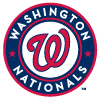 Victor Robles, OF, Nationals: Robles still had his fans during draft season, as people could point to his age (24) and his past success back in 2019, when he hit 17 homers and stole 28 bases, and convince themselves that big things were coming. He probably won't have many fans left next winter, as his age and long-expired prospect reports might be all that's left to cling to. Even in that decent 2019 season, there were glaring red flags about his bat, as it's very difficult to explain how a playing with an xSLG of .363 and a 4.6 percent barrel rate could reliably manage even his mediocre home-run total. He crashed back down to earth in 2020, hitting .220 with just three homers, and he's been even worse this season, hitting .212 while clearing the fence just once. To make matters worse, he still swings like a power hitter in some ways, as his 20.3 degree average launch angle is a near match for the likes of Tyler O'Neill (20.5 degrees) and isn't far behind Joey Gallo (21.3 degrees). That's simply not an angle that works when you have a bottom-tier average exit velocity, as his 84.1 mph mark is third-worst among hitters with at least 250 plate appearances. He's simply not a starting-caliber player with his bat at the moment, and he doesn't have the elite wheels to make up for that from a fantasy perspective, as his 75th-percentile sprint speed is good but not great.
Victor Robles, OF, Nationals: Robles still had his fans during draft season, as people could point to his age (24) and his past success back in 2019, when he hit 17 homers and stole 28 bases, and convince themselves that big things were coming. He probably won't have many fans left next winter, as his age and long-expired prospect reports might be all that's left to cling to. Even in that decent 2019 season, there were glaring red flags about his bat, as it's very difficult to explain how a playing with an xSLG of .363 and a 4.6 percent barrel rate could reliably manage even his mediocre home-run total. He crashed back down to earth in 2020, hitting .220 with just three homers, and he's been even worse this season, hitting .212 while clearing the fence just once. To make matters worse, he still swings like a power hitter in some ways, as his 20.3 degree average launch angle is a near match for the likes of Tyler O'Neill (20.5 degrees) and isn't far behind Joey Gallo (21.3 degrees). That's simply not an angle that works when you have a bottom-tier average exit velocity, as his 84.1 mph mark is third-worst among hitters with at least 250 plate appearances. He's simply not a starting-caliber player with his bat at the moment, and he doesn't have the elite wheels to make up for that from a fantasy perspective, as his 75th-percentile sprint speed is good but not great.
Rounds 11-13
| Player | Position | Team | ADP | EAV Rank | Difference |
|---|---|---|---|---|---|
| Andres Gimenez | 2B/SS/3B | CLE | 160.8 | 795 | -634.2 |
| Marco Gonzales | SP | SEA | 174.0 | 745 | -571.1 |
| Alex Colome | RP | MIN | 183.7 | 668 | -484.3 |
| Clint Frazier | OF | NYY | 175.2 | 562 | -386.9 |
| Anthony Santander | OF | BAL | 160.6 | 424 | -263.4 |
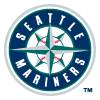 Marco Gonzales, SP, Mariners: To a certain extent, Gonzales' precipitous drop here says something about the volatility of pitcher wins. The southpaw finished tied for third with Zack Greinke in that category from 2018 to 2020, trailing only Gerrit Cole and Justin Verlander, despite pitching for a Seattle team that won just 47.9 percent of its games. The Mariners are winning at a 53.3 percent clip this season, but Gonzales has been credited with just a single win. The unpredictability of wins is only responsible for part of that, however, as his performance has also degraded significantly. He's never been a high strikeout guy, so his 19.8 percent strikeout rate isn't necessarily the primary problem here, as it's slightly above his career mark of 19.3 percent. You need to be good in other areas if you're giving up that much contact, however, and Gonzales hasn't been. He walked just 5.9 percent of opposing batters over his first six years in the league but owns a merely average 8.5 percent walk rate this year. Perhaps more importantly, however, is that his 30.5 percent groundball rate is not only easily a career low, it's one of the lowest marks in the entire league, beating just three other pitchers who have thrown at least 50 innings. It's no surprise, then, that his ERA has ballooned to 5.88, as giving up a lot of contact while failing to keep the ball on the ground is a well-tested recipe for failure.
Marco Gonzales, SP, Mariners: To a certain extent, Gonzales' precipitous drop here says something about the volatility of pitcher wins. The southpaw finished tied for third with Zack Greinke in that category from 2018 to 2020, trailing only Gerrit Cole and Justin Verlander, despite pitching for a Seattle team that won just 47.9 percent of its games. The Mariners are winning at a 53.3 percent clip this season, but Gonzales has been credited with just a single win. The unpredictability of wins is only responsible for part of that, however, as his performance has also degraded significantly. He's never been a high strikeout guy, so his 19.8 percent strikeout rate isn't necessarily the primary problem here, as it's slightly above his career mark of 19.3 percent. You need to be good in other areas if you're giving up that much contact, however, and Gonzales hasn't been. He walked just 5.9 percent of opposing batters over his first six years in the league but owns a merely average 8.5 percent walk rate this year. Perhaps more importantly, however, is that his 30.5 percent groundball rate is not only easily a career low, it's one of the lowest marks in the entire league, beating just three other pitchers who have thrown at least 50 innings. It's no surprise, then, that his ERA has ballooned to 5.88, as giving up a lot of contact while failing to keep the ball on the ground is a well-tested recipe for failure.
Rounds 14-18
| Player | Position | Team | ADP | EAV Rank | Difference |
|---|---|---|---|---|---|
| Leody Taveras | OF | TEX | 211.8 | 1005 | -793.2 |
| Jarred Kelenic | OF | SEA | 204.0 | 951 | -747.0 |
| Daulton Varsho | C/OF | ARI | 232.8 | 975 | -742.2 |
| Triston McKenzie | SP | CLE | 200.3 | 903 | -702.7 |
| Amir Garrett | RP | CIN | 263.0 | 824 | -561.0 |
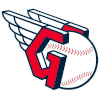 Triston McKenzie, SP, Cleveland: We're reaching the point where drafters started to take flyers on young guys who haven't done much in the first half, with Taveras, Kelenic and Varsho averaging 78 plate appearances apiece between them. McKenzie, however, has spent the bulk of the year in Cleveland's rotation but has fallen nearly as far as those three. Most people who took a chance on him during draft season were probably aware of the risks, as the 33.1 innings he threw last year represented his only experience above Double-A, but it was hard not to love what he showed in that small sample. His 33.1 percent strikeout rate was an elite mark, while his 7.1 percent walk rate was better than average and his 40.0 percent groundball rate was perfectly fine. He's maintained an excellent strikeout rate (32.1 percent) this season, but that's about where the positives end. No one who's thrown at least 40 innings has a walk rate worse than his 18.9 percent mark, while his 28.2 percent groundball rate is third-lowest among that same group. No amount of whiffs can make up for weaknesses that extreme, though he did just dominate the Royals on Friday, striking out nine while allowing just one hit and one walk in seven scoreless innings, which might give reason to look to him again as a lottery ticket for the second half.
Triston McKenzie, SP, Cleveland: We're reaching the point where drafters started to take flyers on young guys who haven't done much in the first half, with Taveras, Kelenic and Varsho averaging 78 plate appearances apiece between them. McKenzie, however, has spent the bulk of the year in Cleveland's rotation but has fallen nearly as far as those three. Most people who took a chance on him during draft season were probably aware of the risks, as the 33.1 innings he threw last year represented his only experience above Double-A, but it was hard not to love what he showed in that small sample. His 33.1 percent strikeout rate was an elite mark, while his 7.1 percent walk rate was better than average and his 40.0 percent groundball rate was perfectly fine. He's maintained an excellent strikeout rate (32.1 percent) this season, but that's about where the positives end. No one who's thrown at least 40 innings has a walk rate worse than his 18.9 percent mark, while his 28.2 percent groundball rate is third-lowest among that same group. No amount of whiffs can make up for weaknesses that extreme, though he did just dominate the Royals on Friday, striking out nine while allowing just one hit and one walk in seven scoreless innings, which might give reason to look to him again as a lottery ticket for the second half.
Rounds 19-23
| Player | Position | Team | ADP | EAV Rank | Difference |
|---|---|---|---|---|---|
| Brad Keller | SP | KC | 336.2 | 1008 | -671.8 |
| Victor Reyes | OF | DET | 305.6 | 941 | -635.4 |
| Justus Sheffield | SP | SEA | 317.5 | 945 | -627.5 |
| Sam Hilliard | OF | COL | 339.1 | 944 | -607.9 |
| Wander Franco | SS | TB | 288.1 | 884 | -595.9 |
 Brad Keller, SP, Royals: Keller's first half demonstrated why I don't like pitchers with low strikeout rates. They need so many other things to go right for them to even be somewhat useful, and when things instead go poorly, they can hurt your team across multiple categories. Everything else seemingly went right for Keller in 2020 to get him to a 2.47 ERA despite his 16.3 percent strikeout rate. His 7.9 percent walk rate and 52.8 percent groundball rate did represent real skills that he deserves credit for, but they wouldn't have gotten him to that ERA on their own, as his 4.33 xFIP demonstrated. This season, his ERA has shot up to 5.97. That's been accompanied by a jump in his BABIP from .233 to .357, but his poor year has been about more than bad luck. His 18.6 percent strikeout rate is technically a career high but is still well below league average, which doesn't work out well when combined with a walk rate that's ballooned to 10.7 percent and a groundball rate that's fallen to a career-low 48.4 percent. He does have 16 strikeouts while allowing just three runs across his last two starts, so he's showing signs of turning things around, but even the good version of Keller typically requires some BABIP luck to be a true asset, so there's little reason for much excitement here.
Brad Keller, SP, Royals: Keller's first half demonstrated why I don't like pitchers with low strikeout rates. They need so many other things to go right for them to even be somewhat useful, and when things instead go poorly, they can hurt your team across multiple categories. Everything else seemingly went right for Keller in 2020 to get him to a 2.47 ERA despite his 16.3 percent strikeout rate. His 7.9 percent walk rate and 52.8 percent groundball rate did represent real skills that he deserves credit for, but they wouldn't have gotten him to that ERA on their own, as his 4.33 xFIP demonstrated. This season, his ERA has shot up to 5.97. That's been accompanied by a jump in his BABIP from .233 to .357, but his poor year has been about more than bad luck. His 18.6 percent strikeout rate is technically a career high but is still well below league average, which doesn't work out well when combined with a walk rate that's ballooned to 10.7 percent and a groundball rate that's fallen to a career-low 48.4 percent. He does have 16 strikeouts while allowing just three runs across his last two starts, so he's showing signs of turning things around, but even the good version of Keller typically requires some BABIP luck to be a true asset, so there's little reason for much excitement here.


